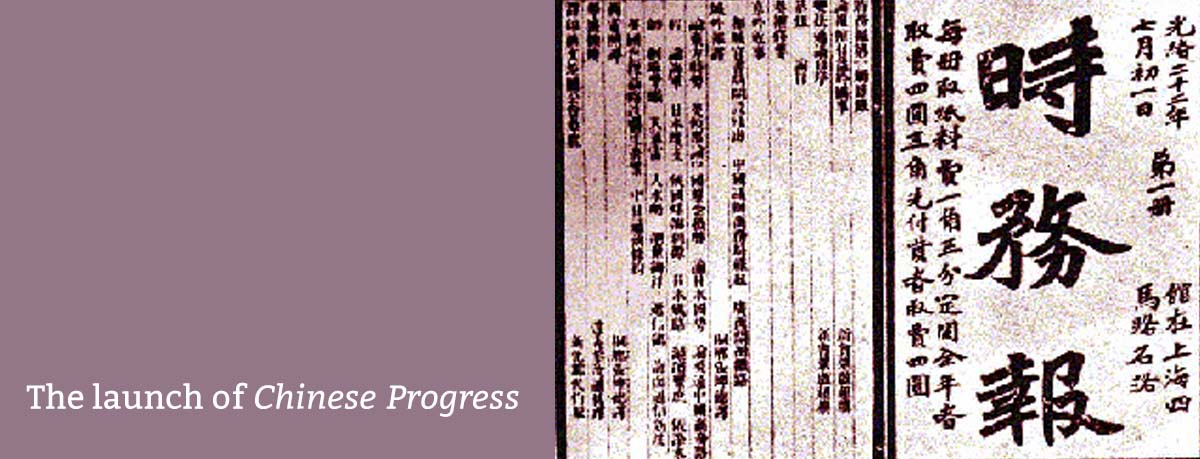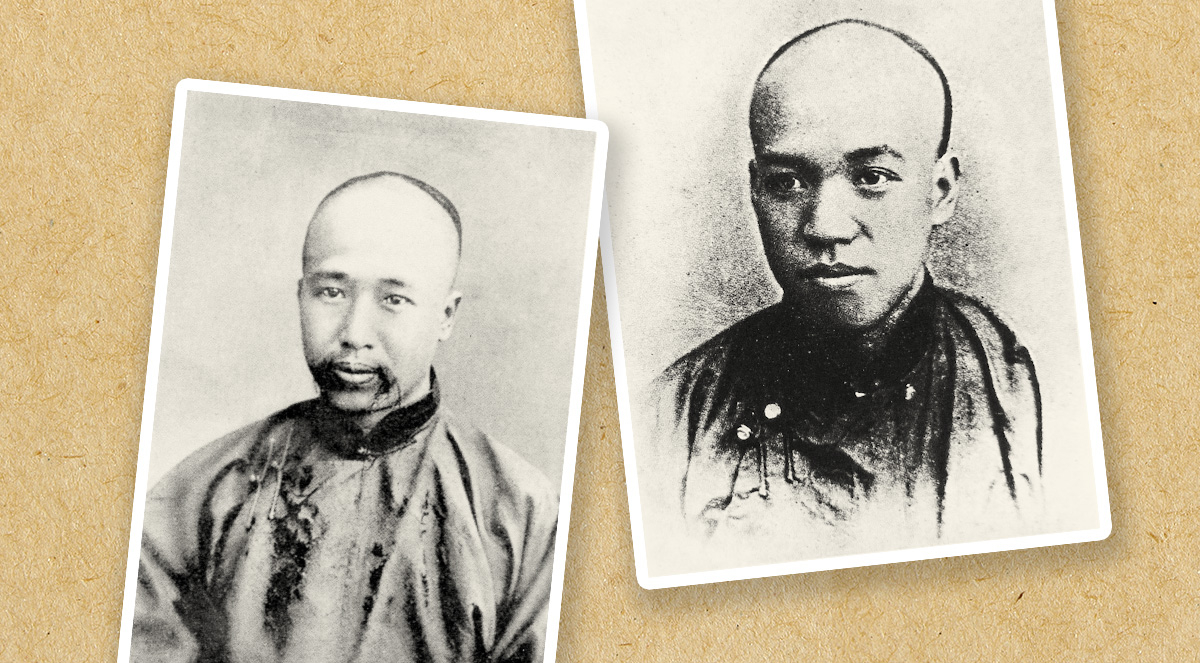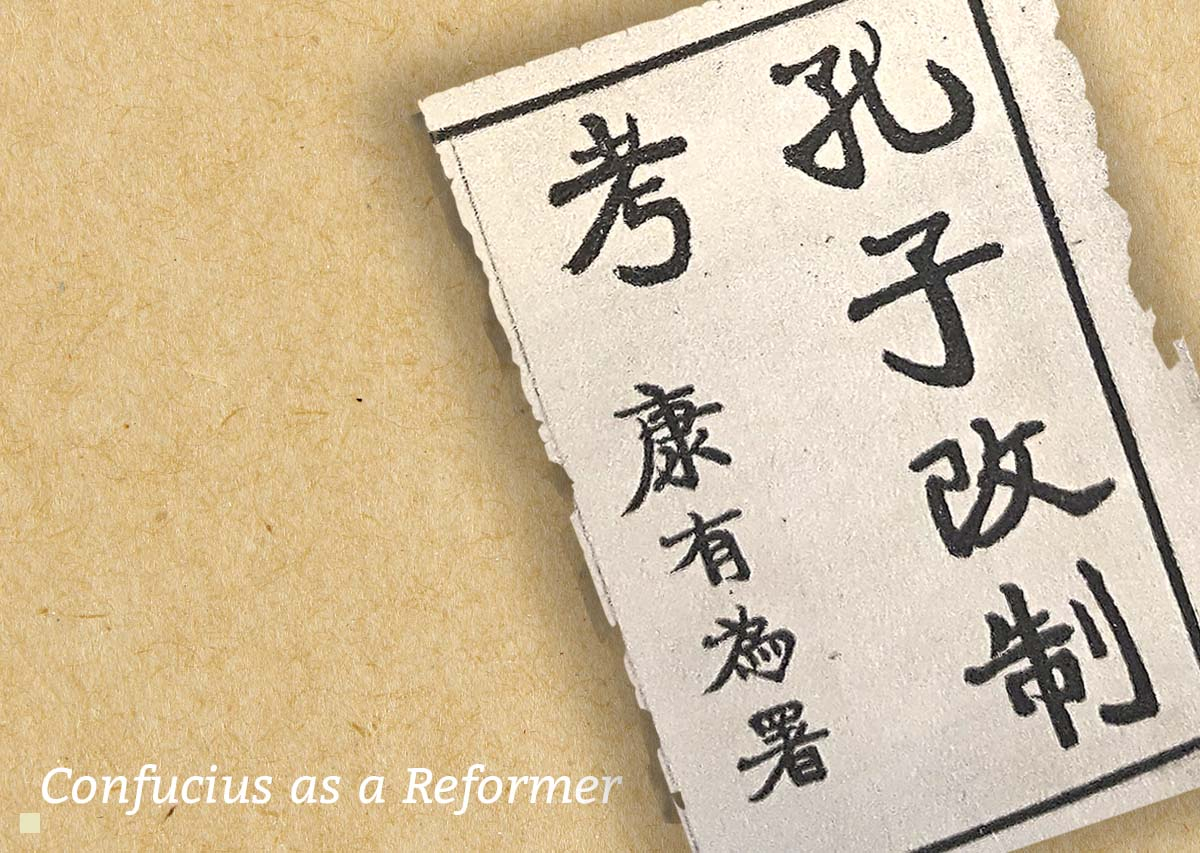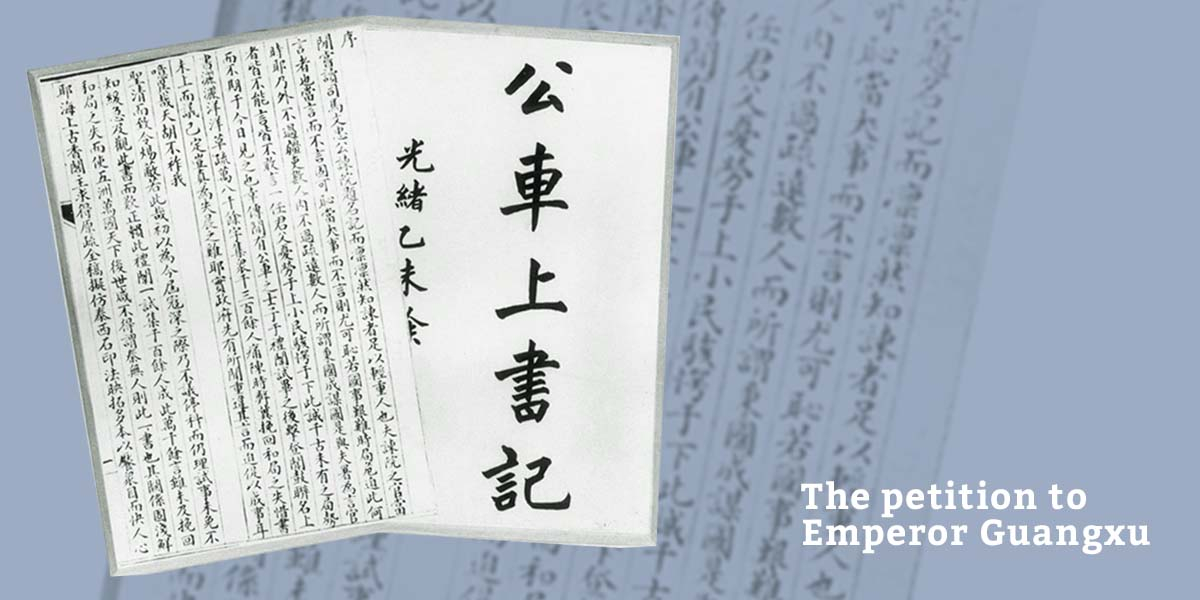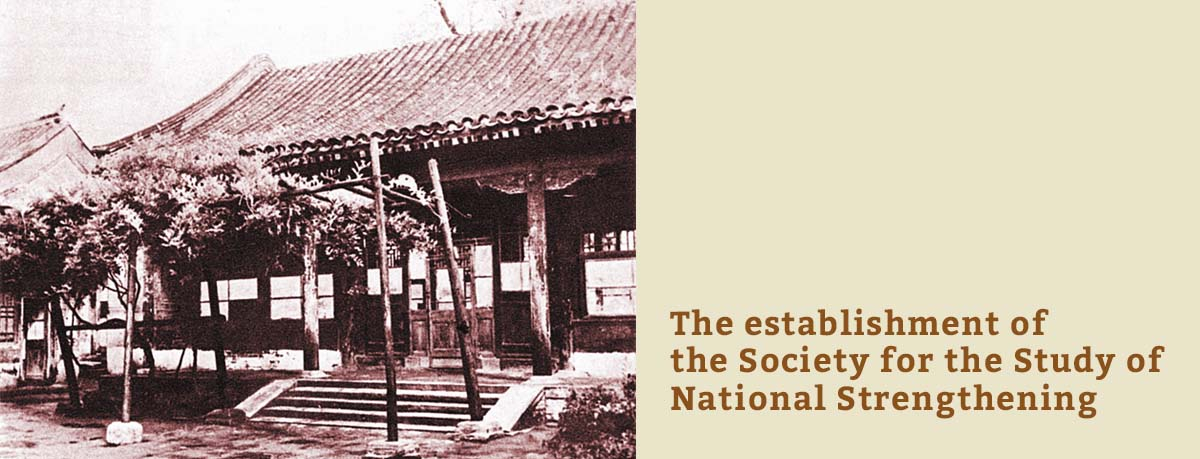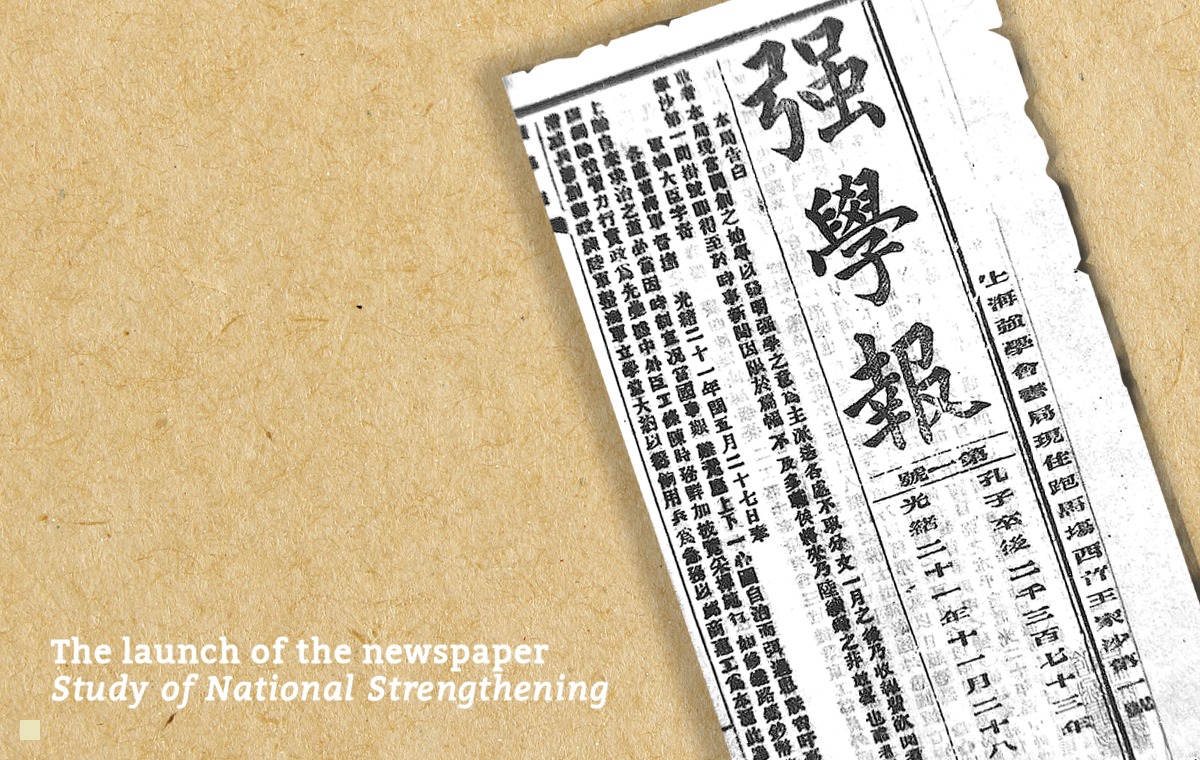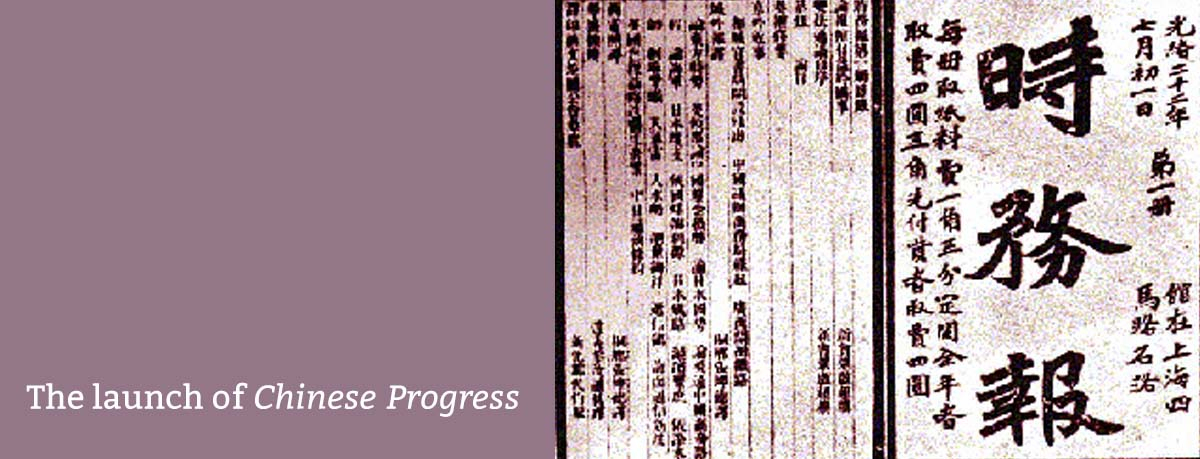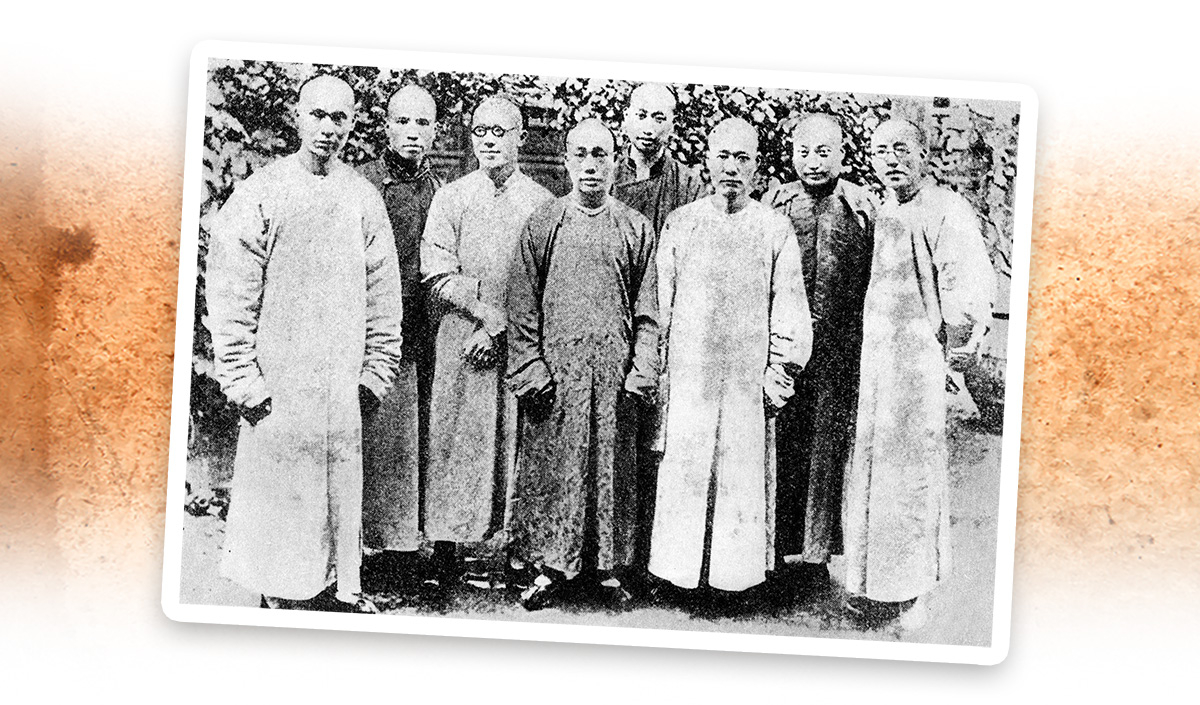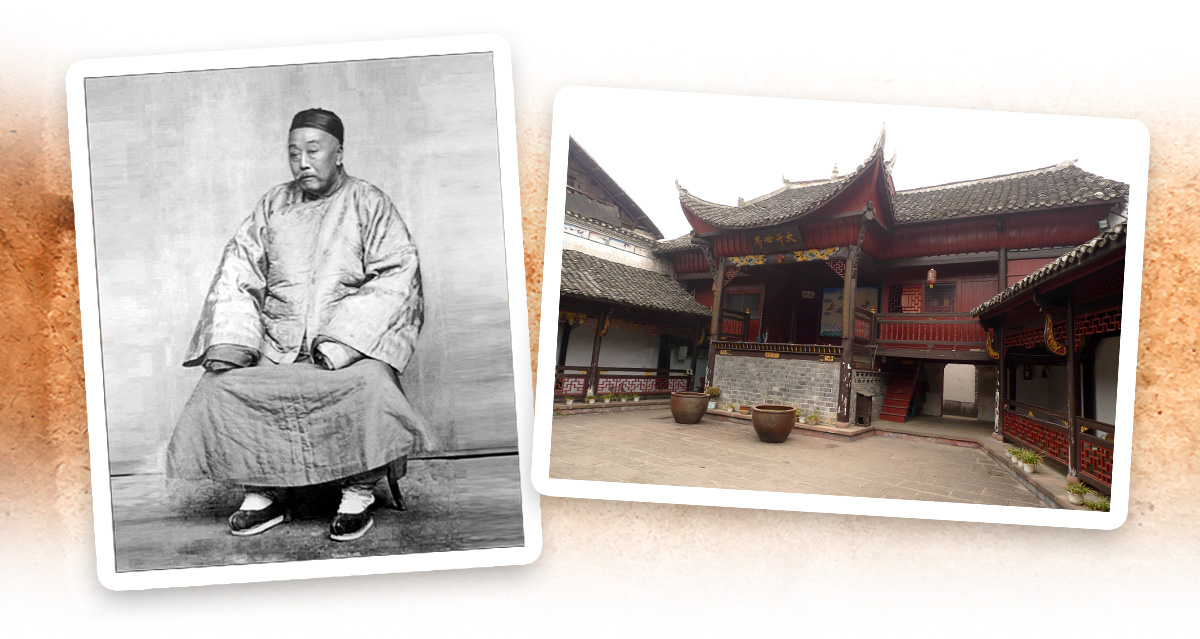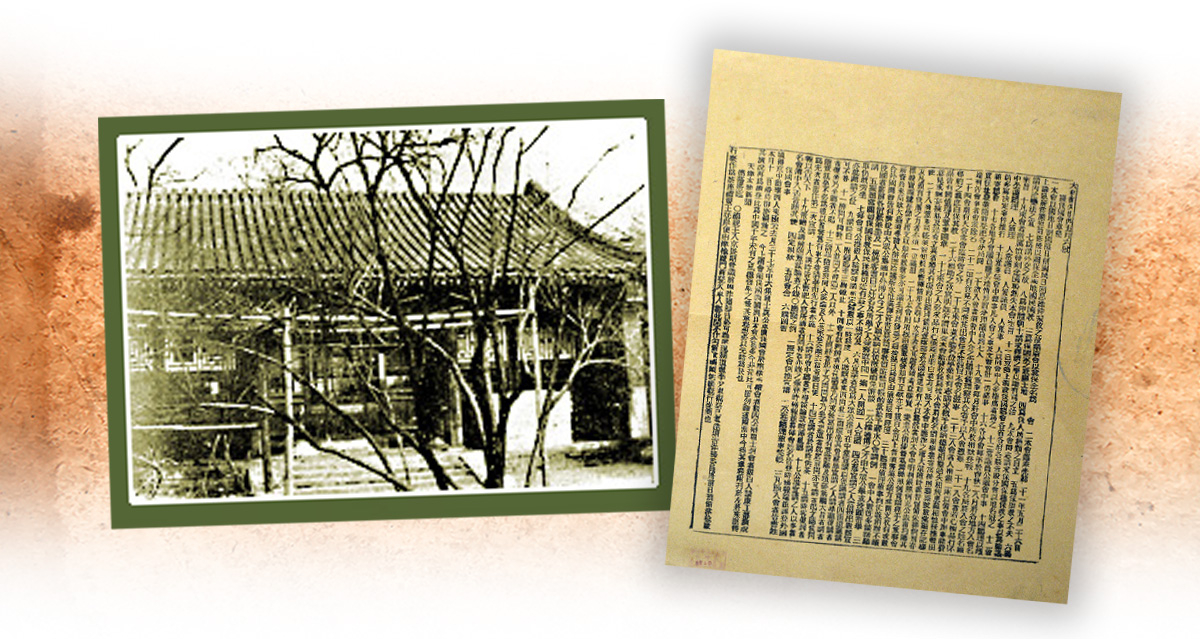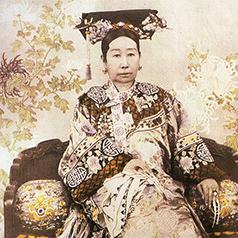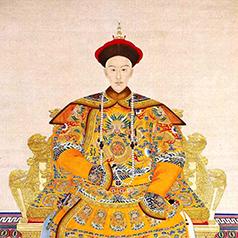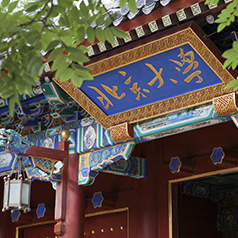The First Sino-Japanese War was a test of China and Japan’s modernisation efforts through the Self-strengthening Movement (洋務運動) and the Meiji Restoration respectively. It proved the former a failure and the latter a success. China’s disastrous defeat in this war intensified the imperialist scramble for concessions in the country, putting it in danger of dismemberment. Facing the crisis, a group of patriotic scholar-officials represented by Kang Youwei (康有為) and his student Liang Qichao (梁啟超) launched a new reform movement. Between 1888 and 1898, Kang voiced the desperate need for reform in seven successive memorials to Emperor Guangxu (光緒). Among them, the Memorial on Coping with the Overall Situation in Reply to an Imperial Proclamation (《應詔統籌全局摺》) submitted in January 1898 attracted the most attention. In the memorials, Kang clearly stated that “for the nation to survive, it must reform the polity, change old practices, and bring in new ones” (開制度新政局,革舊圖新,以存國祚). He also proposed a dozen new political initiatives that would become the framework of the Hundred Days’ Reform.
Kang deemed that Western-style military and industrial development alone were not enough to save the country. China’s political system must also be reformed and a constitutional monarchy, like Japan’s, must be established. Not only did the Kang-led Reformist Camp (維新派) submit memorials, but they also undertook many substantial initiatives, such as publishing books, developing new philosophies, forming learned societies, and launching newspapers. These efforts laid the groundwork for China’s second attempt at reform - after the Self-strengthening Movement - in the early modern era.
|
|
Liang Qichao, when elaborating on the core principles of the reform proposed by his teacher Kang Youwei, said that China “cannot adhere to the old ways and must pursue reform; it must change rapidly rather than gradually, and aim for a complete transformation rather than minor tweaks.” What did he mean by “minor tweaks” and “complete transformation”? |
|
|
See answer below. |
Kang Youwei and his student Liang Qichao were the main advocates and leaders of the Hundred Days’ Reform. The duo became known as “Kang-Liang”.
Kang Youwei achieved renown as an advocate of the Hundred Days’ Reform, yet he was also staunchly pro-establishment and in favour of a constitutional monarchy. In his twilight years, he became stubbornly orthodox. This made Kang and Liang Qichao went their separate ways. In 1917, Kang worked with the Beiyang (北洋) warlord Zhang Xun (張勳) to reinstate Puyi (溥儀), the deposed emperor, to revive the Qing dynasty. Liang managed to thwart Zhang’s plan by teaming up with Duan Qirui (段祺瑞), the then Premier of the Republic of China. With the team’s counterattack, all hope for reviving the monarchy was dashed, which also spelt the end of Kang’s political life.
Liang’s entire life was spent in the cause of his country. He was a key figure in numerous major historical events such as the Hundred Days’ Reform, the movement opposing Yuan Shikai’s (袁世凱) attempt to declare himself emperor, and the movement against Zhang Xun’s Manchu Restoration (張勳復辟). A rare polymath, Liang was a politician, thinker, educator, and historian, all combined in one person. Known for his many outstanding achievements, he exerted great influence in many sectors from the final years of the Qing dynasty to the Republican era. He was also a respected teacher to countless students. Among his students were Cai E (蔡鍔), who sparked off the National Protection War (護國之役) against Yuan; and Xu Zhimo (徐志摩), the celebrated writer.
Wanmu Cottage (萬木草堂) stands in what is now Yuexiu District (越秀區), Guangzhou (廣州). Built in 1804 as the Qiu family’s library and residence for the imperial examination in town. It was let to Kang Youwei in 1891 and renamed the Wanmu Cottage. As the venue where he met with his students, delivered lectures, spread his ideas on reform, and organised political activities, the cottage became the home base of the Hundred Days’ Reform.
Confucius as a Reformer (《孔子改制考》) was written by Kang Youwei in 1892 and published in 1898. It claimed that since there were no historical records before Confucius’s time, Confucius himself made up the purported words and deeds of ancient holy men and sages “recorded” in the Six Classics (六經) to advocate reform by drawing on history. Kang’s aim was to stimulate public discussion on the Hundred Days’ Reform by invoking Confucius.
In 1895, Liang Qichao and a group of juren (舉人, candidates who passed the provincial examination) arrived at Beijing (北京) for the imperial examination. Following Kang Youwei’s lead, they submitted a joint petition to Emperor Guangxu to protest China’s signing of the unfavourable Treaty of Shimonoseki with Japan following the First Sino-Japanese War. The incident was later called the Public Vehicle Petition (公車上書). Although the petition was rejected, it had a huge social impact and marked the emergence of the Reformist Camp as a key player in the impending historical events.
During the Han dynasty (漢朝), public horse-drawn carriages were commonly used by candidates who travelled to the capital for the civil service examination. Thus, the term “public vehicle” became synonymous with those candidates taking the examination in the capital. The incident initiated by Kang Youwei was later known as the “Public Vehicle Petition”. Volume two of Mr Nanhai’s Collection of Poetry (《南海先生詩集》) (Nanhai being Kang’s nickname) titled the Hanmanfang Poetry Collection (《汗漫舫詩集》) contains a poem’s preface that reads, “with China’s defeat in the war with Japan, juren from 18 provinces, some 3,000 in number, issued a joint petition. On the following day, Charles Denby, the diplomat of the United States in China, acquired a draft of the petition, made numerous copies, and displayed them throughout the country. He prefaced it the “Public Vehicle Petition”.
In November 1895, Kang Youwei established the Society for the Study of National Strengthening (Qiangxuehui, 強學會) in Beijing. As the first political organisation set up by the Reformist Camp, the Society was supported by some liberal officials. It gradually brought the reform movement into the public discourse by encouraging discussion on current affairs, promoting reform, and facilitating the formation of similar organisations nationwide.
The newspaper Study of National Strengthening (Qiangxuebao,《強學報》) was the official publication of the Society for the Study of National Strengthening’s Shanghai (上海) branch. On 12 January 1896, Kang Youwei released the debut issue in Shanghai. This free publication advocated reform and laid the foundation for the Reformist Camp’s later promotion efforts via newspapers and publications.
Chinese Progress (《時務報》) was launched on 9 August 1896 with Wang Kangnian (汪康年) as its chairman and Liang Qichao as its initial chief editor. It was one of the most influential newspapers during the Hundred Days’ Reform period.
The Shiwu Xuetang (時務學堂, or the Academy of Current Affairs) was a modern school established in Hunan Province (湖南) in 1897 before the Hundred Days’ Reform. Pictured is a group photo of its director and instructors. From left to right: Ye Juemai (葉覺邁), Tan Sitong (譚嗣同), Wang Shi (王史), Ou Jujia (歐榘甲), Xiong Xiling (熊希齡), Han Wenju (韓文舉), Tang Caichang (唐才常), and Li Weige (李維格).
The founding of modern schools was one of the initiatives planned by Chen Baozhen (陳寶箴), the governor of Hunan, to modernise the province. In 1897, he released a piece titled Circumstances Leading to the Establishment of the Academy of Current Affairs in Hunan (《湖南時務學堂緣起》) in which he expounded his objectives in establishing the school and cultivating talent for supporting China’s reform. He tasked Huang Zunxian (黃遵憲) and Xiong Xiling with its establishment. Xiong Xiling, Liang Qichao, and Li Weige were appointed as the school’s headmaster, chief Chinese instructor, and chief Western language instructor respectively. The Academy of Current Affairs played a key role in promoting reform. After the Wuxu Coup (戊戌政變) and the dismissal of Chen and other reformist officials, the school was forced to close.
On the left: a photo of Chen Baozhen taken during the Hundred Days’ Reform period; on the right: a modern-day photo of Chen’s ancestral house in Hunan. Since the First Sino-Japanese War, a climate of reform prevailed in Hunan, largely thanks to the efforts of Chen. After becoming the governor in 1895, he was active in implementing reforms and exploring new ideas. Regrettably, his dismissal after the Wuxu Coup also put an end to Hunan’s efforts in modernisation. Chen’s son Chen Sanli (陳三立) was a celebrated late Qing poet and his grandson Chen Yinke (陳寅恪) was a renowned historian.
On the left is the former site of Baoguohui (保國會, or National Preservation Society) in Beijing. On the right is the Society’s constitution. Founded by Kang Youwei in Beijing on 12 April 1898, the society’s mission was to safeguard the nation, its people, and its traditional teachings. It became a key political organisation during the time of the Hundred Days’ Reform.
|
|
Liang Qichao, when elaborating on the core principles of the reform proposed by his teacher Kang Youwei, said that China “cannot adhere to the old ways and must pursue reform; it must change rapidly rather than gradually, and aim for a complete transformation rather than minor tweaks.” What did he mean by “minor tweaks” and “complete transformation”? |
|
|
The Self-strengthening Movement, China’s first reform movement in the early modern age, was used in this case as a reference for the level of change. “Minor tweaks” referred to efforts limited to emulating the superficial aspects of Western civilisation, for example by procuring its military equipment and establishing similar industries, while ignoring the fundamental political system that gave rise to the successful traits. The idea of “complete transformation”, referred to a comprehensive approach that called for political, military, economic, and cultural reform. The reformers of the Hundred Days’ Reform were in favour of pursuing political reform modelled on Japan’s Meiji Restoration and establishing a constitutional monarchy. |
Sources of most photos used in this feature piece: Fotoe (pictures 1, 2, 8 and 10), Visual China Group (picture 9), misc. photo sources.




